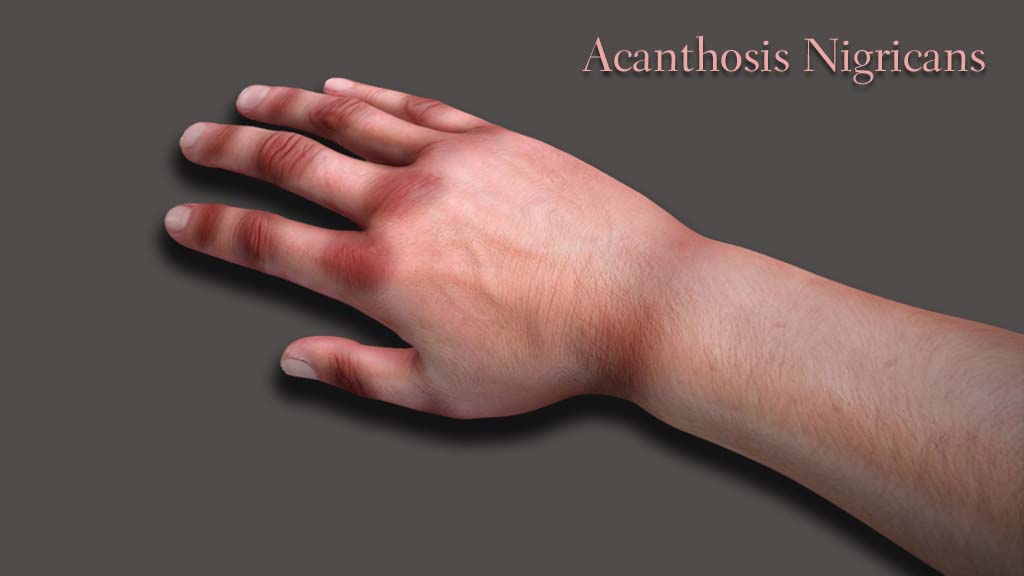Acanthosis Nigricans

What is acanthosis nigricans?
Acanthosis nigricans is a skin condition characterized by dark, thick, velvety patches on the skin, typically found in body folds such as the armpits, groin, and neck. It can be caused by a number of factors, including obesity, certain endocrine disorders, and certain medications. In some cases, it may be a sign of an underlying medical condition, such as insulin resistance or a malignancy. Acanthosis nigricans is usually benign, but it can be unsightly and may cause self-consciousness.
Why does acanthosis nigricans occur?
Acanthosis nigricans is caused by a number of factors, including genetics, hormonal imbalances, certain medical conditions, and certain medications.
Genetics: Some people are more prone to developing acanthosis nigricans due to inherited genetic mutations.
Hormonal imbalances: Hormonal imbalances, such as those caused by polycystic ovary syndrome (PCOS) or other endocrine disorders, can lead to acanthosis nigricans.
Medical conditions: Acanthosis nigricans can be a sign of an underlying medical condition, such as insulin resistance, which is associated with diabetes. Some types of cancer, such as stomach cancer, can also cause acanthosis nigricans.
Medications: Certain medications, such as oral contraceptives, can cause acanthosis nigricans as a side effect.
In addition, obesity is a common cause of Acanthosis nigricans as it is associated with insulin resistance and high levels of insulin in the blood.
It’s important to note that not all cases of acanthosis nigricans are caused by underlying medical conditions, and the condition is benign in most cases. A proper diagnosis and treatment plan can be discussed with a dermatologist.
How is acanthosis nigricans diagnosed?
Acanthosis nigricans is usually diagnosed based on a physical examination of the affected skin. The characteristic dark, thick, velvety patches of skin can be easily recognized by a dermatologist. In order to confirm the diagnosis, a dermatologist may also take a skin biopsy, which involves removing a small sample of skin for examination under a microscope.
Additionally, some blood tests may be ordered to rule out any underlying medical conditions that may be causing acanthosis nigricans, such as diabetes, hypothyroidism or other endocrine disorders, and some cancers.
It’s important to note that acanthosis nigricans can be a symptom of an underlying medical condition, so it is important to see a healthcare professional for proper diagnosis and treatment.
Can acanthosis nigricans occur on the face?
Acanthosis nigricans can occur on any part of the body, including the face. However, it is more commonly found in body folds, such as the armpits, groin, and back of the neck. When acanthosis nigricans occurs on the face, it typically appears as dark, thickened patches of skin on the cheeks, chin, or around the mouth.
It is worth noting that acanthosis nigricans on the face can be caused by different factors than the ones that affect the body. For example, it can be a symptom of an internal malignancy, or a side effect of some medications such as oral contraceptives, corticosteroids, and some antipsychotics, among others.
If you notice any changes in the appearance of your skin, especially if it is in your face, it is important to see a healthcare professional for proper diagnosis and treatment.
Are there any treatment options available for acanthosis nigricans?
Yes, there are several treatment options available for acanthosis nigricans, depending on the underlying cause of the condition.
Topical treatments: Topical creams, lotions, and ointments containing ingredients such as urea, lactic acid, salicylic acid, and tretinoin can help to reduce the thickness and dark pigmentation of the affected skin.
Oral medications: Oral medications such as retinoids, metformin, and pioglitazone can be used to treat acanthosis nigricans caused by underlying medical conditions such as insulin resistance and PCOS.
Lifestyle changes: Losing weight, improving hygiene and avoiding irritants can help to improve the appearance of acanthosis nigricans.
Surgery: In some cases, surgery may be recommended to remove the affected skin.
It’s important to note that acanthosis nigricans can be a symptom of an underlying medical condition, so treating the underlying condition may also improve the appearance of the affected skin.
It’s also important to work with a healthcare professional to determine the best treatment plan for your specific condition, as some treatments may not be suitable for certain individuals and some may have side effects.
Can weight loss improve my acanthosis nigricans?
Weight loss can be an effective treatment for acanthosis nigricans, especially when the condition is caused by obesity or insulin resistance. Being overweight or obese can cause an increase in insulin levels, which can lead to insulin resistance and acanthosis nigricans. Losing weight through a combination of diet and exercise can help to lower insulin levels and improve the appearance of the affected skin.
It is important to note that weight loss alone may not be enough to completely eliminate acanthosis nigricans, particularly in cases where the condition is caused by an underlying medical condition or medication. However, weight loss can still be beneficial in combination with other treatments and can help to improve the overall effectiveness of those treatments.


